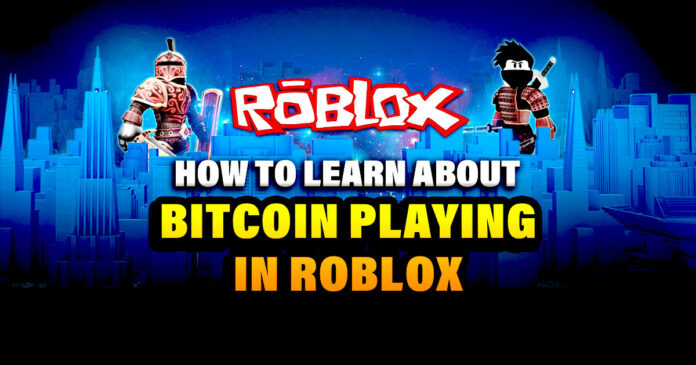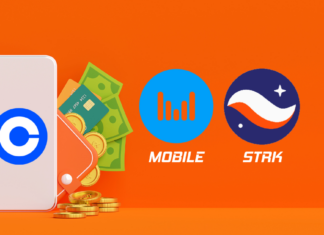Roughly 45% of Roblox’s user base consists of individuals aged 12 or below, as indicated by Roblox’s SEC filing report in December 2022. Moreover, 60% of users fall within the 16 or younger age group, while only 17% are 25 years or older.
This demographic distribution is noteworthy, especially considering Roblox’s impressive 65.5 million daily active users. Now, imagine the potential impact: Roblox has the opportunity to propel web3 adoption by introducing gamified educational content on Web3, catering to both the current and upcoming generations. Intriguing, right? Well, Roblox’s Bitcoin Miner Beta is a prime example of such an initiative. Let’s dive in!
What Is Roblox?
Roblox, an application offering a diverse range of games, enables users to engage in gameplay, create their games, and communicate with others in an online setting. Positioned as the “ultimate virtual universe,” Roblox provides experiences where users can socialize, construct virtual spaces, and utilize virtual currency. The games within Roblox are officially termed “experiences” and encompass various genres such as roleplay, adventure, fighting, obstacle courses, tycoons, simulators, and more.
There's a Bitcoin game on Roblox with 160 MILLION plays that simulates,
– Mining bitcoin, setting up rig,
– Upgrading graphics cards
– Getting more energy, (so you can mine more)
– Exchanging Bitcoin for play $You'll learn more about 'Bitcoin Mining' in 2 mins playing this… pic.twitter.com/cBM0jTsJ8O
— MattyVerse (@DCLBlogger) October 23, 2023
Notably, popular games on the platform, such as Adopt Me! and Brookhaven RP, often fall under the roleplay category, resembling virtual hangouts more than traditional games. These serve as Gen Z’s equivalent of Club Penguin for millennials.
While the platform is free, users can make in-app purchases within each experience. A significant portion of these sales (approximately 29 cents per dollar spent) goes back to the game’s creator. This unique model allows creators of all ages to earn money if their games gain popularity, taking user-generated content to a new level.
Roblox was officially launched in September 2006, predating well-known platforms like Snapchat, Discord, and Instagram. Despite its early inception by co-founders David Baszucki and Erik Cassel, Roblox took about a decade to gain significant traction. Its popularity soared during the COVID-19 pandemic, experiencing a 40% surge in daily active users.
Roblox For Education?
In a recent move, the metaverse gaming company allocated $15 million to its Roblox Community Fund, emphasizing its commitment to supporting educational initiatives on the platform. This funding aims to empower creators to develop experiences that cover a wide range of subjects, from mathematics to strategies for mental and emotional well-being. Collaborating with entities like the Museum of Science, Boston, and NASA, Roblox facilitates virtual experiences, enabling users to delve into STEM topics such as aerospace and coding.
This substantial investment follows the previous contribution of $10 million to the fund, marking a significant step toward ushering in a new era of gamified education. With a user base approaching 200 million monthly users, two-thirds of whom are of school age, Roblox has become a virtual playground on an unprecedented scale.
To put it into perspective, Roblox hosts more students monthly than the combined school-going children in the US, UK, and Canada.
RoboCo Sports League sets the stage for immersive learning on Roblox, offering a unique opportunity to delve into robotics and build connections. Congrats on the launch @RoboCoSL! https://t.co/DCnxAaX28X
— Roblox (@Roblox) October 22, 2023
Leveraging this vast user base, direct access, and market influence, Roblox can disrupt the multi-trillion-dollar education market, historically resistant to change. By prioritizing education and innovation, Roblox is paving the way for a transformative era of online learning that seamlessly integrates gaming and education.
Given the early stage of this disruption, the next decade holds the potential to be a pivotal moment in digital education as Roblox emerges as a formalized learning tool worldwide.
Web3 And Education
Web3 is rapidly expanding, causing significant shifts in industries worldwide. Despite the widespread use of cryptocurrency, many remain unfamiliar with its workings.
The importance of Web3 education is hard to overstate. As crypto adoption accelerates, it becomes crucial to grasp essential concepts—such as the ability to DYOR (Do Your Research). After all, establishing a robust foundation in crypto and financial education is key to navigating the evolving crypto landscape.
Regrettably, accessing well-structured crypto information online can be challenging. Much of the content lacks comprehensiveness and structure. Furthermore, the absence of a tracking mechanism for one’s learning progress and the lack of engaging resources contribute to the difficulty. Besides, lengthy and rigid content tends to bore users, leading to a loss of interest. It is where gamified education comes into play!
Amid the gaming industry’s exploration of blockchain opportunities, gamified learning experiences have emerged as effective tools for delivering crypto knowledge. The fusion of these concepts creates a distinctive and rewarding learning experience that is crucial for accelerating web3 onboarding.
Roblox Bitcoin Miner: An Easy Way To Learn All About Mining?
Bitcoin Miner is a Roblox Tycoon or Simulator game that immerses players in building a Bitcoin empire. Players can customize their mining base with diverse decorations, experimenting with various available blocks. The primary objective is to amass wealth and efficiently manage a cryptocurrency empire, adopting a format reminiscent of Facebook-centric Zynga games like Farmville.
Within this gaming experience, players can design their Bitcoin-mining office by unlocking and collecting various GPUs, generators, decor items, and more. As they progress, players can level up unique abilities, fulfill quests, engage in interactions and trades with other players, and explore the distinct world of Bitcoin Miner.
Although the game is still in its Beta phase, it underwent initial trials in 2018. Frequent changes, events, and updates contribute to a continuously fresh experience, sustaining a robust player base—evidenced by over 161.0 million visits to the experience.
Gameplay Mechanics
In Roblox Bitcoin mining, the journey starts with a plot of land. Players begin by acquiring a table for $40 and placing a “Budget Graphics Card” (also $40). This card consumes a fictional 1 watt of energy, generating 0.00004 BTC per second.
Given Bitcoin’s value of $5,000 in the Roblox metaverse, this translates to roughly $0.20 (remember, all values are simulated and not actual Bitcoin, U.S. dollars, energy, or carbon emissions). To enhance efficiency, players strategically incorporate a low-cost electricity box, contributing to the simulated environmental impact.
New update 🧪
🌎 Experimental new version of bitcoin island
📊 Complete rebalance of almost all bitcoin cards📢 we also added some QoL changes:
* Base player speed is now higher
* Shelfs are slightly smaller— Poland Game Builders (@robloxpolgamdev) August 22, 2023
The overarching goal involves maximizing Bitcoin output by gradually replacing less powerful rigs with advanced and pricier alternatives. More sophisticated machines necessitate efficient energy sources and appropriate furniture placement, adding layers of strategy to the gameplay.
Economic Realism in Virtual Mining
As mundane as it may sound, this gaming experience mirrors the mechanics of real-life Bitcoin mining.
Players must carefully manage their energy consumption, represented by plugged-in mining rigs, against their energy production from various power sources. This balancing act reflects the practices employed by genuine Bitcoin miners, especially those classified as “vertically integrated” miners like Stronghold, Marathon, and Greenidge.
In a parallel manner, players can engage in overclocking within the game. If their setup generates more energy than the miners consume, they can periodically push their rigs to run faster than their default settings, increasing Bitcoin production within shorter time frames.
Real-life Bitcoin miners leverage immersion cooling to overclock their rigs. It involves submerging rigs in a non-conductive liquid to prevent overheating when operating at maximum capacity. However, this is where the realism in the game diverges.
Gaming vs. Reality
While the Bitcoin mining rigs in Roblox mostly consist of graphics cards, the use of GPUs for mining BTC in reality was phased out within the first three years of Bitcoin’s existence. Instead, high-performance ASIC chips, specifically designed for the blockchain’s algorithm, took precedence.
Mining Bitcoin in the Roblox experience can be enjoyable, particularly for adults. The option to use real money to purchase Roblox’s in-game digital currency, Robux (not a cryptocurrency), allows players to set their prices at Bitcoin ATMs, reminiscent of the “rosebud” cheat code in The Sims.
Interestingly, players can amass enough resources within a few hours to mine 2,000 BTC per second without making additional purchases, equivalent to $10 million at current metaverse prices. In stark contrast, even Grayscale’s Bitcoin Trust, the largest corporate Bitcoin treasury in reality, holds only 621,000 BTC (valued at ~$21.1 billion) after years of accumulation.
Game is called 'bitcoin miner'
If you have Roblox you can search/find it easy, pic.twitter.com/HiqmP4GW8N
— MattyVerse (@DCLBlogger) October 23, 2023
Conclusion
In any case, Bitcoin Miner Beta has effectively achieved what numerous web3 education articles have struggled to do—introducing individuals unfamiliar with Bitcoin to its intricacies.
As we move forward, the success of such gamified educational experiences hints at a promising trend, suggesting that more innovative and enjoyable crypto education initiatives may become increasingly prevalent. This shift in approach holds the potential not only to inform but also to inspire a broader audience to actively participate in and understand the world of Web3.
Disclaimer
The information discussed by Altcoin Buzz is not financial advice. This is for educational, entertainment, and informational purposes only. Any information or strategies are thoughts and opinions relevant to the accepted risk tolerance levels of the writer/reviewers, and their risk tolerance may differ from yours.
We are not responsible for any losses that you may incur as a result of any investments directly or indirectly related to the information provided. Bitcoin and other cryptocurrencies are high-risk investments, so please do your due diligence.
Copyright Altcoin Buzz Pte Ltd.





























![10 cryptos with the Lowest Market Cap [Part – 2]](https://www.altcoinbuzz.io/wp-content/uploads/2018/09/low-mcap-part-2-dca-cryptocurrency-bitcoin-news-altcoinbuzz-investing-ethereum-crypto-blockchain.png)
